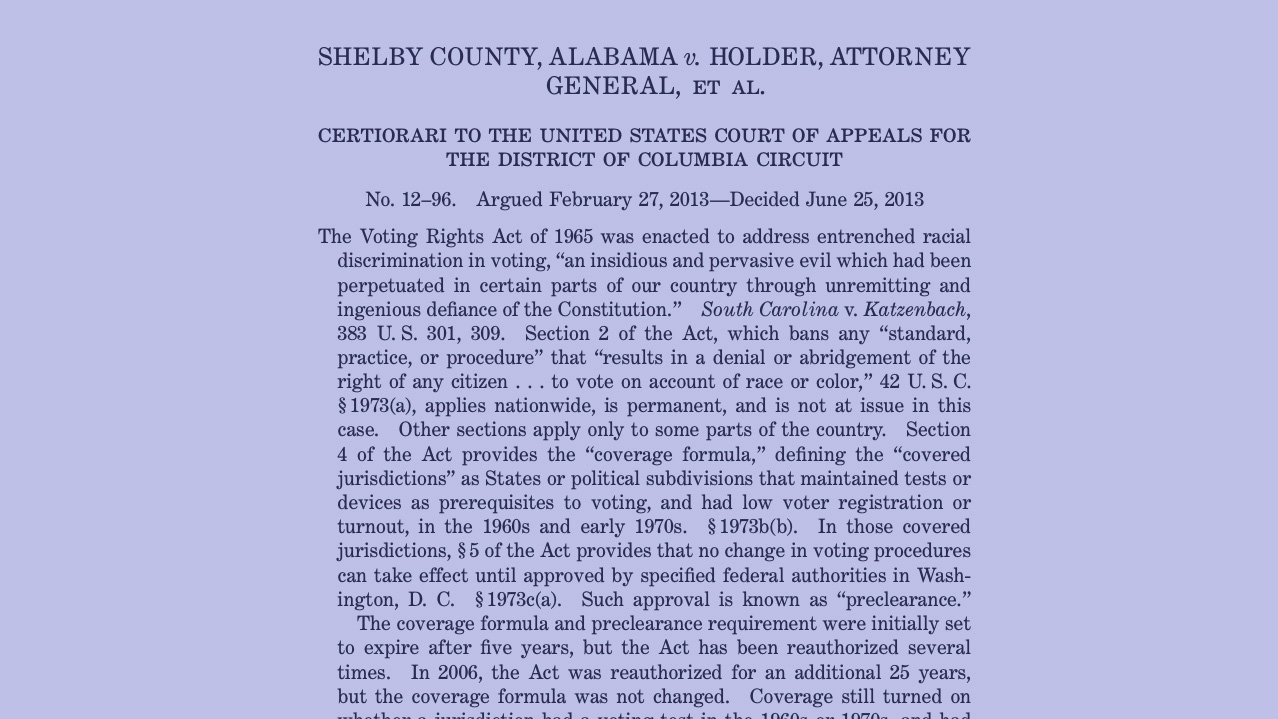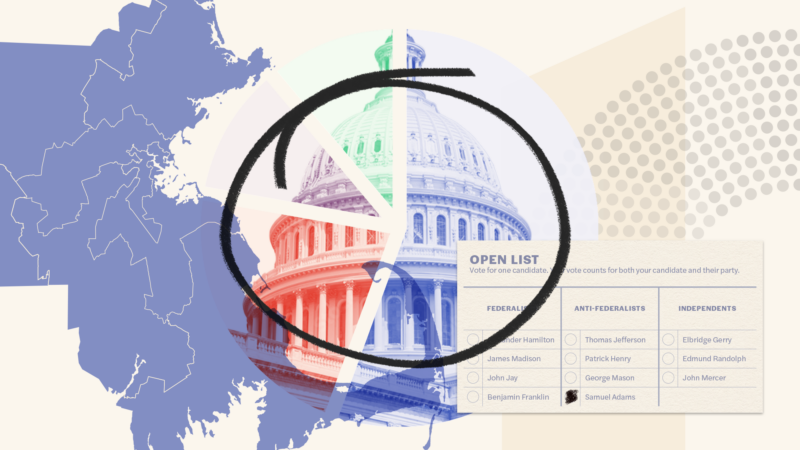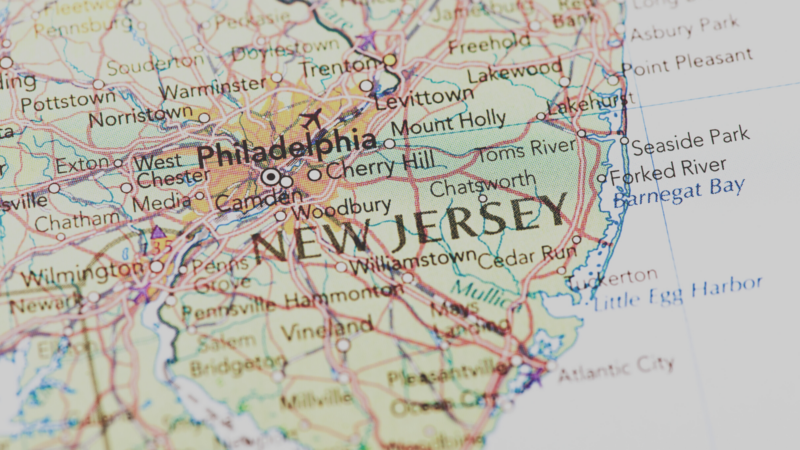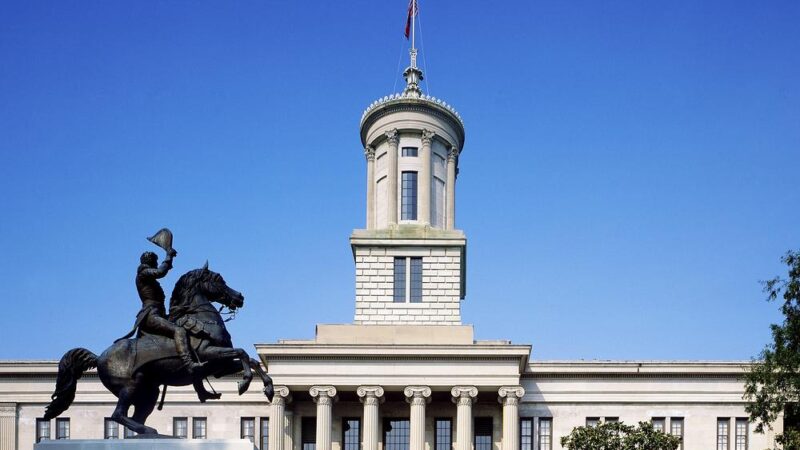How Did We Get Here: Protecting Democracy from State Level Threats in the Age of National Parties
- October 13, 2023
From More than Red and Blue: Political Parties and American Democracy

Abstract
Over the past generation, the Democratic and Republican parties have become coordinated national teams, but democracy in the U.S. is mostly run at the state level. This collision of nationalized parties and subnational institutions has led the parties to pursue their national ambitions through the state level, weakening democracy in the process. Through gerrymandering, voting restrictions, restrictions on civil liberties, and threats of election subversion, state governments have attempted to tilt the playing field of American democracy in favor of their national party. The collision of nationalized parties and state governance calls for new national policy to protect and expand democratic institutions across all states.
U.S. democracy is under strain. Partisan gerrymandering has reduced the quality of representation for millions of Americans. Restrictive voting laws have made electoral participation more difficult in many areas of the country. The possibility of election subversion in the upcoming 2024 presidential election continues to surface. In part due to the nationalization of political conflict in the U.S.1Hopkins, Daniel. 2018. The Increasingly United States. University of Chicago Press., and in part due to the attempted coup at the U.S. Capitol on January 6, 2021, many researchers and observers have become keenly attentive to conflict over democracy among national politicians in Washington, D.C. Yet while the threats to American democracy are part of a national conflict over the direction of the country, the threats are not originating in Washington D.C. — they are mostly coming from the states.
Historically, when conflict over democracy arises in the U.S., it is most evident at the state level. The American system of federalism bakes this in. Federalism is a system of government in which (at least) two levels of government share authority; in the U.S., it’s the national government in Washington, D.C. and the 50 state governments composed of state legislatures, governors, and state courts. The U.S. and about 24 other countries have federalism, which is distinct from countries with “unitary” systems of government (including New Zealand, Sweden, Japan, and over 100 others) that place all of their constitutional authority at the national level.
But even compared to other federal systems, the United States’ system of federalism grants an outsized amount of authority to the lower level of government, the state level. Although some federal systems grant wide authority to the lower level in some policy areas, such as Canada with language and immigration policy, the United States redistributes fewer economic resources across regions and has greater differences in public goods provision from state to state. Although national policy in the mid-20th century generated economic convergence across regions of the U.S., state level policy has become much more important in recent years. As national policymaking stalled in the face of gridlock in Washington, D.C., state governments have implemented increasingly distinct policies in areas like health care, taxation, and welfare. Compared to a generation ago, a person’s quality of life today is more tied to their state of residence.2Grumbach, Jacob. 2018. “From Backwaters to Major Policymakers: Policy Polarization in the States, 1970-2014.”Perspectives on Politics 16 (2): 416-435.
However, not only is the United States’ system an outlier when it comes to the economic aspects of federalism — it also gives states control over key democratic institutions. Districting, election administration, vote counting and certification, and police powers are all under the purview of state governments, with wide-ranging consequences for democracy. State legislatures and commissions can draw gerrymandered district maps, state officials can refuse to certify election results, and state laws can make it harder to participate in elections.
These types of strategies are only viable because there is not much done at the national level when it comes to electoral institutions. This is increasingly true as a result of recent Supreme Court casesthat limit enforcement of the Voting Rights Act of 1965, such as Shelby County v. Holder 3Shelby County v. Holder, 570 U.S. 529 (2013). and Brnovich v. Democratic National Committee4Brnovich v. Democratic National Committee, 141 S. Ct. 2321 (2021).. Every election in the U.S., from the smallest local public office to the U.S. president, is administered and certified by state authorities. At the national level, despite being called the Federal Elections Commission, the FEC regulates money in politics, not voting or districting.
By contrast, other federal systems have much more centralized electoral institutions. In Canada, a non-partisan and independent federal agency called the Office of the Chief Electoral Officer of Canada (or alternatively, Elections Canada) oversees and administers all aspects of elections. Election results are validated by local election officers, but they are appointed and work under the supervision of the Chief Electoral Officer. Finally, independent commissions have been in charge of redistricting in Canada since 1964, and the redistricting process includes input from Elections Canada.5The Electoral System of Canada. 2015. 4th Edition. Ottawa: Elections Canada. Few U.S. states use non-partisan independent commissions for redistricting, and judicial enforcement is generally permissive of partisan gerrymandering as long as there is not clearly racist intent.
In the age of hyperpolarization, however, we now have decentralized institutions but centralized parties – a disconnect that creates new threats.
The conventional wisdom is that this state level authority over elections and districting is helpful for American democracy. Since the election of President Donald Trump in 2016, scholars and pundits alike have argued that federalism acts as a safeguard against authoritarianism, preventing a would-be autocrat in the highest office from usurping absolute power. This argument can be found in James Madison’s idea of “double security” in the Federalist Papers. In Federalist 51, Madison6Madison, James. 1788. Federalist 51. National Archives: Founders Online. https://founders.archives.gov/documents/Hamilton/01-04-02-0199 describes a federal system that is vertically divided into separate levels of government and horizontally subdivided into separate departments, thus ensuring that “a double security arises to the rights of the people.” He contends that “the different governments will control each other, at the same time that each will be controlled by itself.” This “double security” argument has a lot of merit. State governments have the potential to stand against an attempt to consolidate power over democratic institutions during times of political crisis.7Landau, David, Hannah J. Wiseman, and Samuel R. Wiseman. 2019. “Federalism for the Worst Case.” Iowa Law Review 105: 1187-1255. Many would argue that state governments were effective in opposing threats to democracy stemming from the Trump administration.
But while the “double security” argument is important, there is another side to the coin. When authority over the rules of democracy are decentralized across the states, some states might weaken democratic institutions in ways that leave the entire U.S. political system at greater risk. Decentralized election administration and districting mean that voter suppression or gerrymandering in a single state affects the balance of power at all levels of government, national, state, and local. And decentralized election certification means (depending on Supreme Court interpretation) that a single swing state could imperil a presidential election by trying to give its Electoral College votes to a candidate who did not win the vote in their state. Political coalitions can also critically weaken their political enemies with state level policy. Labor unions, a key organizational ally of multiracial democracy8Frymer, Paul and Jacob Grumbach. 2021. “Labor Unions and White Racial Politics.” American Journal of Political Science 65 (1): 225-240., have been decimated by state policy over the past two decades, with major political ramifications.9Feigenbaum, James, Alexander Hertel-Fernandez, and Vanessa Williamson. 2018. “From the Bargaining Table to the Ballot Box: Political Effects of Right to Work Laws.” National Bureau of Economic Research. https://www.nber.org/papers/w24259. My argument here is not that there are no benefits to state level authority, but rather that we face a difficult tradeoff between centralization and decentralization that is too often ignored.
Both centralized and decentralized institutions can, in principle, support a healthy democracy. In the age of hyper-polarization, however, we now have decentralized institutions but centralized parties — a disconnect that creates new threats. A generation ago, Democrats and Republicans at the state level were often disconnected from their national parties, and had more state-specific goals and conflicts. But since the 1990s, activists, donors, and interest groups with national ambitions have made major political investments at the state level. Groups like the American Legislative Exchange Council and Americans for Prosperity on the right, and climate and reproductive rights groups on the left, are integrating state level politicians into a national tug of war over the direction of the country. This gives state level officials, who have authority over democratic institutions, new incentives to tilt the rules in ways that favor not only their state level colleagues, but all members of their party across the country who seek power at any level.
My recent book, Laboratories Against Democracy: How National Parties Transformed State Politics10Grumbach, Jacob. 2022a. Laboratories Against Democracy: How National Parties Transformed State Politics. Princeton, New Jersey: Princeton University Press., uses quantitative analysis to track the health of democracy in the states over the past few decades. I find that, in some states, democracy has dramatically weakened since 2000, and especially since 2010. The government of North Carolina, a state that had been expanding democracy since the end of Jim Crow, drew a heavily gerrymandered map that allowed the Republican Party to win a majority of North Carolina’s seats in Congress (77 percent) with only a minority of votes (49.3 percent) in 2018. Gerrymandering in this and other states also insulated state legislators from voters, allowing them to make unpopular policy changes without worrying about accountability from the electorate.11Rogers, Steven. 2017. “Electoral Accountability for State Legislative Roll Calls and Ideological Representation.”American Political Science Review 111 (3): 555-571. With the Supreme Court ruling in Dobbs v. Jackson Women’s Health Organization now permitting states to ban abortion, gerrymandering is enabling some state legislatures to pass unpopular abortion bans without punishment from voters. In states with gerrymandered districts, an anti-abortion minority of voters could determine the majority of a state legislature.12Grumbach, Jacob. 2022b. “The Supreme Court Just Rolled Democracy Back. You Can Measure How Much.” Politico, June 30. https://www.politico.com/news/magazine/2022/06/30/court-made-america-less-democratic-00043549. Many state legislatures seem to already have factored this into their calculus. Despite the fact that the majority of their constituents support abortion rights13Grumbach, Jacob, and Christopher Warshaw. 2022. “In Many States with Antiabortion Laws, Majorities Favor Abortion Rights.” Washington Post, June 25. https://www.washingtonpost.com/politics/2022/06/25/roe-dobbs- scotus-opinon-abortion-restrictions-rights-polarization., states like Georgia, Wisconsin, Ohio, and Texas have already instated either near-total bans or six-week bans on abortion.14Knight, Sarah, Wynne Davis, Kristin Gourlay, Carmel Wroth, Haidee Chu, and Katie Daugert. 2022. “Here’s Where Abortions Are Now Banned or Severely Restricted.” NPR. https://www.npr.org/sections/health-shots/2022/06/24/1107126432/abortion-bans-supreme-court-roe-v-wade. More analysis must be done, but early estimates suggest that the recent 2020 redistricting cycle was more balanced, with some gerrymandering in both red (e.g., Ohio) and blue (e.g., Nevada) states and more partisan balance nationally — but with some state legislative and U.S. House maps, such as that of Wisconsin, remaining heavily pro-Republican. Gerrymandering has clear implications for political parties’ incentives to be responsive to voters.
State legislatures further restricted democracy by passing voter suppression laws that made it more complicated and time consuming to vote for some residents, such as limiting polling place hours, reducing ballot dropbox locations, making it harder to register to vote, and creating new voter ID requirements. Some pundits have argued that these voter suppression laws aren’t such a big deal because some of the policies do not appear to reduce voter turnout on average. But these policies are undemocratic because they unduly raise the cost of voting for potential voters (or subsets of potential voters) without increasing election integrity or security; voters and activists work hard to ensure that voter suppression laws do not reduce turnout.15Zhang, Emily Rong. “Questioning Questions in the Law of Democracy: What the Debate over Voter ID Laws’ Effects Teaches about Asking the Right Questions.” UCLA Law Review (forthcoming). Furthermore, voter suppression laws often target groups that already face significant barriers to voting — like young people, low-income individuals, racial minorities, and people who have been incarcerated — making it even less likely that current non-voters will participate in future elections. Such effects do little to change parties’ incentives to alter the patterns of partisan mobilization described in Chapter 3.
Ultimately, the nationalization of party networks may enable antidemocratic coalitions that gain power at the state level to subsequently propel themselves
to national power…
Perhaps most critically, state parties in control of some state legislatures have laid groundwork that could be used to subvert the 2024 presidential election. Strategies include fielding candidates for key state- level positions (like attorney general or secretary of state) that would be willing to block election certification, attempting to assemble alternate slates of presidential electors that would be poised to cast Electoral College votes contrary to the popular vote in their state, and delegating even more power over election administration to state legislatures. 2022 saw many election deniers running for state-level office lose pivotal races16 Gardner, Amy, Reis Thebault, and Robert Klemko. 2022. “Election Deniers Lose Races for Key State Offices in Every 2020 Battleground.” Washington Post, November 13. https://www.washingtonpost.com/elections/2022/11/13/election-deniers-defeated-state-races. and Congress pass a reform of the Electoral Count Act. However, legal scholars argue that several avenues for election subversion from state level actors remain viable. Laws penalizing election subversion remain unclear and weak, and voting machines in some states still lack paper trails that could be used in the event of a disputed election.17Hasen, Rick. 2022. “After Celebrating Likely Passage of Bill Fixing the Electoral Count Act, We Must Focus on What Didn’t Make It into the Omnibus to Help Prevent Future Election Subversion.” Election Law Blog [blog], December 20. https://electionlawblog.org/?p=133905.
Finally, state level control has made another key institutional function undemocratic: policing and criminal justice. Whereas other countries’ police forces are often national, the U.S. Constitution gives states police powers, making governors, and, at the local level, mayors, the commanders in chief of nearly all police agencies, prisons, and jails. At the same time, the U.S. is a global outlier when it comes to authoritarian policing and mass incarceration. Conventional wisdom suggests that aggressive criminal justice policy in the U.S. reflects the preferences of tough-on-crime voters, but Sances18Sances, Michael. 2021. “Do District Attorneys Represent Their Voters? Evidence from California’s Era of Criminal Justice Reform.” Journal of Political Institutions and Political Economy 2 (2): 169-197. shows that district attorneys are less responsive to the attitudes of their constituents than are other political officeholders. More tellingly, Sances’s19Sances, Michael. 2021. “Do District Attorneys Represent Their Voters? Evidence from California’s Era of Criminal Justice Reform.” Journal of Political Institutions and Political Economy 2 (2): 169-197. analysis shows that both district attorneys and state legislators are less responsive to constituent attitudes than their national co-partisan representatives in the U.S. House.20Rogers, Steven. 2017. “Electoral Accountability for State Legislative Roll Calls and Ideological Representation.” American Political Science Review 111 (3): 555-571.
It’s important to say that the problems of state level democracy are nowhere near as large as those of the Jim Crow era, much less the time of slavery. But they are major. And unlike previous eras, today’s political parties have unified national ambitions. In recent decades, national political organizations and interest group activists have shifted resources to the state level, in response to gridlock at the national level. As a result, state legislatures have polarized and become sites of national political conflict. This trend toward nationalization is reinforced by a media ecosystem that is highly partisan and hyper-focused on national issues. Additionally, the organizational networks that state governments rely on to inform policymaking increasingly reside within national partisan silos, meaning that state legislatures are more likely to adopt legislation that closely resembles the policies of co-partisan states. When a particular policy is antidemocratic in nature, this type of partisan policy diffusion across states allows for widespread democratic backsliding. Ultimately, the nationalization of party networks may enable antidemocratic coalitions that gain power at the state level to subsequently propel themselves to national power by exploiting the institutional levers that federalism puts in the hands of the states.21Grumbach, Jacob. 2022a. Laboratories Against Democracy: How National Parties Transformed State Politics. Princeton, New Jersey: Princeton University Press.
Things might seem dire, but there is plenty that can be done to curb democratic backsliding in the states. Historically, when state governments threaten democracy (often enabled by the Supreme Court), Congress can decide whether to step in and establish baseline national rules.22Grumbach, Jacob, and Eric Schickler. 2021. “In Civil Rights and American Democracy, Congress’ Role Looms Large.” The Hill, August 30. https://thehill.com/opinion/civil-rights/570055-in-civil-rights-and-american- democracy-congresss-role-looms-large. A fortified democracy depends on strong informal rules or norms, not just formal laws and regulations, but politicians’ norms related to democracy have been weakening in recent years.23Levitsky, Steven and Daniel Ziblatt. 2018. How Democracies Die. New York: Crown Publishing. When the system is working, political actors in a democracy tacitly agree not to use norm-violating strategies to defeat their political opponents, even if it would be legal to do so (an example would be to not use partisan gerrymandering to advantage your side, even though you’re technically allowed to). Politicians on all sides know to adhere to norms because they understand that when power shifts, the other side could retaliate by using the same tactics, making everyone worse off. But with norms already violated to such a degree, it is clear that the U.S. needs new formal rules to prohibit further norm erosion. Congress, if it wishes, could force states to draw district maps that do not favor either party and establish procedures to block a state legislature from giving its Electoral College vote to a candidate who didn’t win the election in its state, for example. However, this is easier said than done, given polarization in Congress and filibuster requirements in the Senate.24Mann, Thomas E., and Norman J. Ornstein. 2013. It’s Even Worse Than It Looks: How the American Constitutional System Collided with the New Politics of Extremism. New York: Basic Books. Pieces of federal legislation that aim to protect voting rights, eliminate gerrymandering, update election systems, and ensure police accountability have been introduced in recent congresses, but have so far failed to pass both chambers.
It is, of course, extremely difficult to change institutions. However, there are two strategies to protect democracy that political elites, especially in the Democratic Party, have underutilized over recent decades. The first is to more effectively punish opponents’ antidemocratic norm violations, even when doing so entails norm erosion (what legal scholars have called “constitutional hardball as anti- hardball”). For example, when a Democratic legislature appeared poised to gerrymander New York’s map in its favor, Republican elites suddenly became more supportive of a gerrymandering ban against all parties. However, this support dried up when the New York Court of Appeals threw out the Democratically gerrymandering map for a more balanced one. In short, asymmetric norm erosion by one party might be worse than symmetric norm erosion by both parties, because the latter can generate incentives for both parties to agree to play fair.
A second underutilized strategy is to rebuild the labor movement.25Collier, Ruth Berins, and Jacob Grumbach. 2022. “The Deep Structure of Democratic Crisis.” Boston Review. January 6. https://bostonreview.net/articles/the-deep-structure-of-democratic-crisis. Not only do labor unions support democracy through disseminating political information and mobilizing voters, they also have another important pro-democracy function. Today’s labor unions reduce culture war resentment politics and foster racial solidarity among their members.26Frymer, Paul and Jacob Grumbach. 2021. “Labor Unions and White Racial Politics.” American Journal of Political Science 65 (1): 225-240. This undercuts the ability of antidemocratic factions to stoke racial resentment in order to justify and drum up support for antidemocratic measures. Recognizing this, antidemocratic coalitions have sought to weaken the labor movement by passing anti-labor legislation, like right-to-work laws, at the state level. Right-to-work laws, which permit workers at unionized workplaces to opt out of paying dues for union representation, have reduced union density and diminished the organizational capacity of unions.27Feigenbaum, James, Alexander Hertel-Fernandez, and Vanessa Williamson. 2018. “From the Bargaining Table to the Ballot Box: Political Effects of Right to Work Laws.” National Bureau of Economic Research. https://www.nber.org/papers/w24259. Although it will be difficult, establishing a broad-based and interracial pro-democracy coalition that includes empowered labor unions will be key to counteracting the antidemocratic forces in American politics and preventing further democratic backsliding.
In many states, it’s easier than ever to vote, and the districting process is fairer than ever. In other states, it’s harder to vote, and depending on your district, your vote counts less than it would have 20 years ago. Federalism means that the latter group of states can erode democracy for the whole. As Rocco28Rocco, Philip. 2021. “Laboratories of What? American Federalism and the Politics of Democratic Subversion.” In Democratic Resilience: Can the US Withstand Rising Polarization?, ed. Robert Lieberman, Suzanne Mettler, and Ken Roberts, 297-319. New York: Cambridge University Press. writes, “[w]hile uneven subnational democracy is preferable to a situation in which territorial governments are evenly undemocratic, the existence of undemocratic outliers nevertheless helps to undermine democracy as a whole.” In a federal system where the lower level controls election administration, you can’t just look at the average. You have to look at the variance, too. That’s why national voting rights policy matters. In a previous era of democratic divergence in the states, Congress played a pivotal role in defending democracy by passing the Civil Rights Act and Voting Rights Act of the 1960s.29Mickey, Robert. 2015. Paths Out of Dixie: The Democratization of Authoritarian Enclaves in America’s Deep South, 1944-1972. Princeton: Princeton University Press. Today, neutralizing new threats to democracy that are arising from the states will very likely also require updated federal legislation that guarantees baseline civil and voting rights across the entire country.
The analysis, views, and conclusions contained herein reflect those of the author(s) and do not reflect the views of the American Political Science Association or Protect Democracy.
Related Content
It can happen here.
We can stop it.
Defeating authoritarianism is going to take all of us. Everyone and every institution has a role to play. Together, we can protect democracy.
Donate
Sign Up for Updates Sign Up for Updates
Explore Careers Explore Careers
How to Protect Democracy How to Protect Democracy



